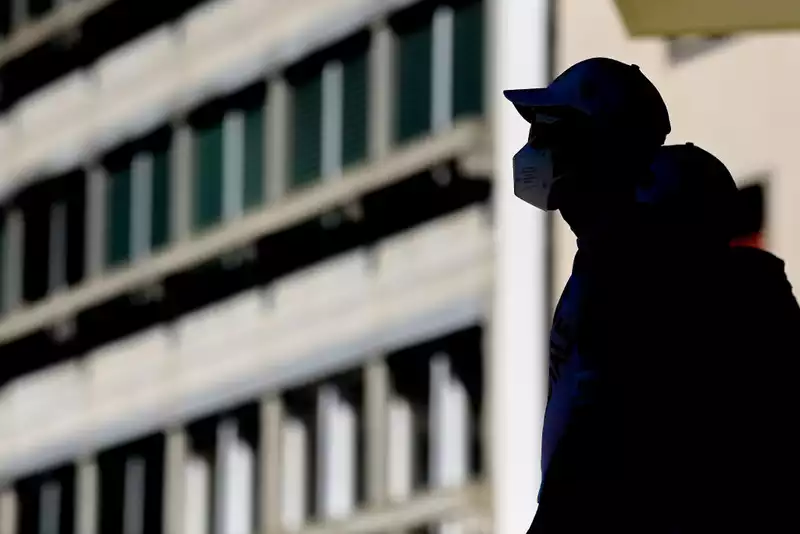The COVID-19 scare loomed over the first half of the Tour de France, with five riders unable to get to the start line due to positive tests and close contact, another three riders testing positive in the final two days, and another suffering from a long COVID on the way home.
After nine days of racing, the peloton had its first rest day of the race (the move from Denmark to France is officially a "travel day" but actually a rest day for the athletes), and with it the first round of in-race COVID-19 testing.
The testing began immediately after the summit finish of Châtel on stage 9, when the riders crossed the finish line and turned around to head to the bus 5 km down the mountain. Before showering and heading to their next hotel, however, they underwent the rest day antigen test mandated by the UCI.
The team buses lined up along the forest road below Mount Chatel, and the French police stood in the way, blocking the road for the press trying to access many of the buses in the line. The police officers cited the presence of the COVID-19 test tent in the middle of the line of buses as the reason - even if the athletes were not passing through at the time.
Four makeshift field inspection tents were lined up, manned by inspectors in full personal protective gear, including plastic gowns. Chairs were lined up a few meters away from the tents, ready for riders to sit and test before boarding the bus.
Several journalists, including Cycling News, were eventually able to negotiate with ASO officials to gain access to the buses beyond the test tent, including the AG2R Citroen, Trek Segafredo, and Ineos Grenadier buses. However, photography and filming of the test area was strictly prohibited.
As a "strongly recommended measure" by the UCI, some teams had already been regularly tested during the race, but on Sunday evening, team staff, commissaires, and other UCI staff were to be tested from the evening in Morzine to Monday morning.
Results are expected within a few hours, and any positive antigen test results will be confirmed by further PCR testing shortly thereafter. In addition, the team doctor, the UCI's chief physician, and the race organizer ASO's physician will analyze the viral load to confirm the infectivity of those who test positive.
"If they test positive today, they can wait for the PCR test," Trek-Segafredo's Jasper Steiven told Sporza. "As long as the team doesn't want it. As you can see, there are a lot of 'ifs.'"
Stage 9 winner Bob Jungels (AG2R Citroën) tested positive for the Grande Pearl, but was allowed to race due to low infectivity.
Teammate Geoffrey Bouchard tested positive after stage 7 as part of AG2R's strategy (recommended by the UCI) of testing every 3 days (changed to daily since Bouchard's positive test) and returned home on the Saturday before the stage.
However, other teams, such as Ineos Grenadier, do not appear to be doing the same, with Tom Pidcock telling the media at the start of stage 9 that teams only test if a rider shows symptoms.
"If you don't have symptoms, there's no point in testing," he said. 'It's just a normal illness. If you're sick, you're sick and you can't race; it's not like you can go home with COVID and not have symptoms. Tests are done when necessary. If someone is sick, they are sick."
So far, Bouchard, race leader Tadei Pogachar's teammate Vegard Stake Rengen, Quick Step Alfavinir staff, Cofidis climber Guillaume Martin, and Ineos Grenadier and other members of the Netflix film crew who followed the positive.
"One of the three riders tested positive, and the others were completely replaced because of the depth of contact," Ineos deputy Rod Ellingworth told The Guardian, adding that some teams were "more lax" about the COVID-19 protocol.
Following the difficult days of crossing the cobblestones of Roubaix and climbing the Vosges and Alps, the remaining riders in the Tour will wait nervously until they know whether they will be able to tackle the Col de Granon and Alpe d'Huez next week.
.

Comments